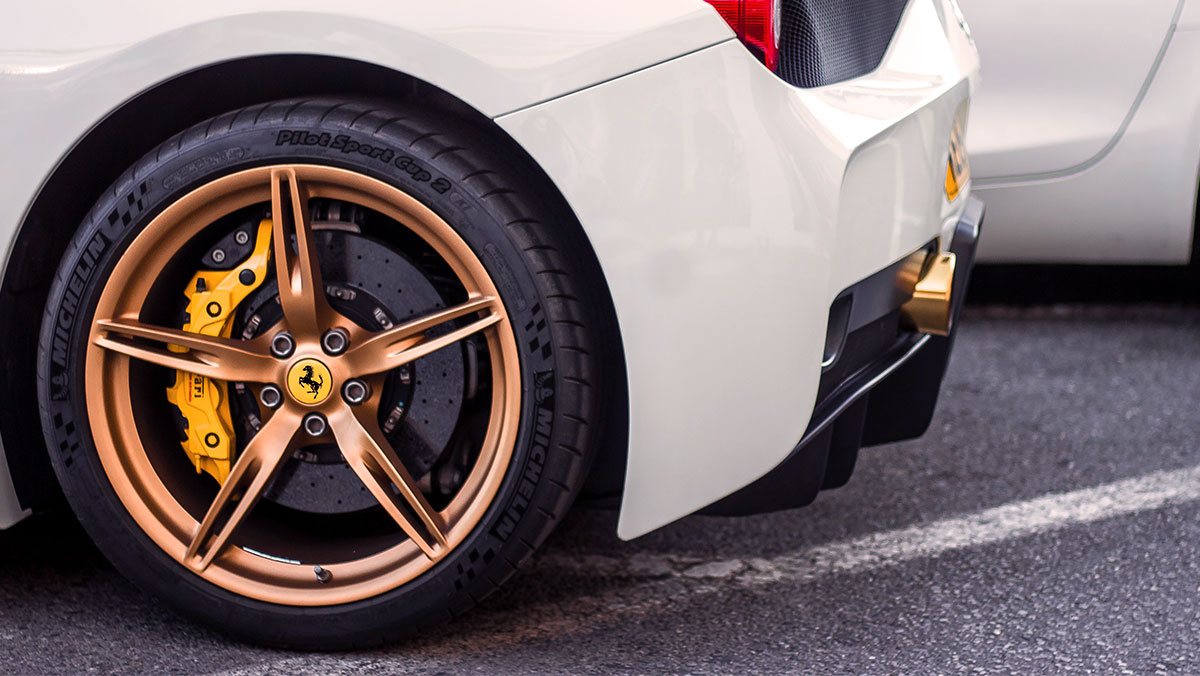
Sound is not a trend that’s shaking the commercial world; it’s something that’s been there all along, and brands are only now starting to realize its potential. We constantly experience different sounds, in our day-to-day lives, from the clicking of our keyboards to the music that we listen to. We’re rarely conscious about most of them, but each one marks a certain association within our minds. Unlike the visual stimulus, which requires our attention to pass on information, sound can do it independently. Think about the sound of a leather couch — you never paid attention to it, but you know how it sounds like. This is one of the reasons why sound is so powerful and why brands should start exploring this medium more seriously, especially in the current state of our visually cluttered world.
To find out more about sonic branding and one of its prime wielders — the automotive industry — Brandingmag sat down with MassiveMusic’s Marijn Roozemond, Creative Strategist Music & Brands.
Brandingmag: Please define sonic branding as you would to a potential client. Can a brand have a ‘sonic identity’?
Marijn Roozemond: A sonic brand is what a brand sounds like and how the identity is translated into sound and music. Sound is a powerful tool and can further strengthen the interactions with your audience. By strategically implementing sound as a branding asset, you can increase your recall and consistency.
The ambition is not only to create a sound that is uniquely you, but also to bring all communications together — whether it’s products, retail spaces, or online content, and make it work for you and your audience instead of simply adding to the noisy world that is already out there.
 Bm: The music used in ads and sonic logos is not the only type of sonic branding. What else is available for a brand to appropriate when it comes to sound?
Bm: The music used in ads and sonic logos is not the only type of sonic branding. What else is available for a brand to appropriate when it comes to sound?
MR: These are indeed exciting times. Technology allows for the inclusion of well-performing speakers in almost everything. This, combined with the fact that we react to sound inherently faster and we’re always looking for ways to reduce our screentime whilst still receiving the necessary information, creates a great opportunity to utilize branded sounds through all consumer interactions, going far beyond a single track or sound logo.
This can be composed to sound consistent and authentic, in line with your brand values — from micro-sounds and interactions (a notification from your shaver when you are pressing too hard, or your car app signaling that it’s time for a routine check-up) to macro-sounds and music in spaces (such as retail, public places, and hotels).
Bm: How does a brand transform one of its characteristics or messages into both a visual asset and a sonic one? Can you think of some examples?
MR: I always appreciated how the rhythm of the T-Mobile logo represents the layout of the visual logo. It’s a sort of morse code translation of the visual logo.
Another good example would be how MassiveMusic London created The Sound of O2, inspired by life’s unmissable moments and the breath you take right before you act. Imminent in the brand name and equally very fitting to their new proposition of providing ‘digital oxygen’ to their customers. Our challenge was to make the breath a flexible asset to be used in as many executions as possible, whilst remaining recognizable.
Bm: Can sound be more powerful than image, in some cases? Is it possible for a person to make stronger associations with a brand’s sound(s) compared to a brand’s visuals? Can you give some examples?
MR: The best-case scenario is to have sound and visuals work together seamlessly, as also recommended by a recent report by Ipsos, the global market research specialists. This way, you create synergy and catch the viewer’s attention. But it is definitely possible for people to have a stronger association with sound. When it comes to the branding world, the more frequently people are exposed to your sound, the stronger the connection with your brand. After all, sound and music are the shortcuts to emotion — try to turn off the sound of a horror movie or a joyous scene and you’ll lose all engagement.
Sonic cues accompany us throughout our life, from the school bell ringing to signal the end of the class up to the sound your computer makes when you turn it on or off. You can easily associate that with the start or end of your working day.
Even when I think of myself and ‘The Blues Brothers’ soundtrack. I first watched it when I was five and it still gets me after all these years. As soon as I hear one of the songs, I immediately take a trip down memory lane. Every single time. That’s why I started jazzing with the saxophone.
Bm: In the automotive sector, car makers are carefully aligning the sound of the car’s engine with its intended destination (i.e., sports cars make powerful, intimidating noises). Do you believe that this has more impact on the consumer than the color of the car, for example?
MR: Definitely. First of all, for safety concerns, cars need to make a sound to create awareness in their surroundings. We do now have the chance to design this sound in a manner that is both pleasantly effective in alerting but also not contributing to the sonic pollution. For example: What if cars only emitted a sound when entering residential areas, and went silent mode when on highways?
Secondly, sound is a huge factor in the experience. Most can agree that the sound of a sports car gives a feeling of power and exclusivity. This sound can also vary between brands. It needs to meet the expectations of the driver to really deliver.
Take Bentley, for example. It’s synonymous with luxury and refinement, whilst we associate the sound of Ferrari with mere power and acceleration. Harley Davidson trademarked the sound of their bikes. So yes, there’s definitely value in the sound of engines. By the way, did you know that in a lot of luxury cars the sound of the engine is amplified by the speaker system?
Bm: What about other sounds, like the ‘thud’ made by closing the doors on a car? Can (or do) premium car brands, for example, design satisfying and unique sounds that can associate a certain level of build quality in the mind of the consumer? Where do you begin when designing such a specific sound?
MR: When designing sounds for the automotive industry, the sky’s the limit — especially with the rise of apps, car-sharing, and autonomous driving, turning the car more into an entertainment center. You have to understand where sound creates added value to the experience. If you just deploy wherever possible, it quickly becomes an audio circus and your consumers can’t help but mute you.
The sound needs to fit the context of usage, especially with these kinds of consequential sounds. You want to hear a resemblance of what it should feel like.
The aesthetic qualities need to tie in with what the brand stands for. Preferably, there is also a bigger thought behind the sound to enable consistency in deployment.
Bm: How do you begin building target audiences when it comes to the perception of sounds and their associations to actions, objects, or brands? Are some demographics more susceptible to certain frequencies, patterns, or music styles than others?
MR: It’s not so different from how a regular branding process works. Indeed, different demographics respond to different tonalities. It’s always good to understand what the ultimate target audience is, as this will give insights to what type of instrumentation or music genre will resonate the most.
Avoid being hip for the sake of being hip. In my opinion, it’s best to compose a sonic brand truly based on what the brand stands for. Keeping the consumer in mind, of course. Just don’t focus entirely on pleasing the audience, or you’ll tend to dispel the statement you want to make as well as your uniqueness.
Bm: How can a brand know that it’s time to explore sensorial aspects, such as sonic branding, of its identity? Are there any cues that can be identified or does the desire for an ownable sound have to come proactively from brand leaders themselves?
MR: As brands are increasingly more present in our everyday lives, they are becoming entities on their own, and we’re also more prone to personify them. Having an ownable sound is a crucial asset. Just as the sound of our voice is a prime indicator of our character and personality.
Even though brands have been around for quite some time, the rise of sonic brands is only now ramping up. There is still a first-mover advantage in a lot of industries. It’s up to the brand leaders to proactively capitalize on that.
Bm: What are your 3 favorite associations between a brand and sound/music?
MR:
- McDonald’s: Because of the consistency over the years, making it one of the most recognizable brands in sound to date. Also because they first launched it as a track with Justin Timberlake before revealing it as the new sonic logo of McDonald’s. And there’s still some mystery on who actually wrote the song.
- The Apple Pay sound: Simply because, to me, it feels too similar to the Super Mario Coin sound, which is a great fit. The association was already there in the collective consciousness. Apple perfectly integrated it.
- The Sound of Philips: I might be biased since we (MassiveMusic) worked hard on it, yet I think we (literally) had a lightbulb moment when we thought of basing their overall identity on a bank of original sounds captured from the human body as well as their most iconic product: the lightbulb. Thanks to the library and consequential instrument we created with that, we were able to cater to Philips’ product sounds and digital services.
As stated above, music can have a strong impact on people. It can even steer behavior. I’m personally also excited about how music can help serve the greater good. At MassiveMusic, we’ve been working on a few Music x Mind projects, an initiative to offer insights on how music can benefit our mind, body, and soul.
For Amsterdam’s healthcare provider Amsta, we created bespoke playlists to help nursing homes be an even better environment for their residents affected by dementia. Or for Instruments for Change, we gave life to an online sample pack that DJs, producers, and musicians can now download for their own music, with all proceeds going to Sounds of Change to help them provide musical training in conflict-affected areas.
Apart from what we did at MassiveMusic, a more recent example is how a lot of people are using songs to help kids wash their hands properly during these uncertain times. I full-heartedly believe that we are really at the forefront of using sound and music to help people in their everyday life. And brands can be the catalyst in this process.
Cover image sources: Elvis Bekmanis
